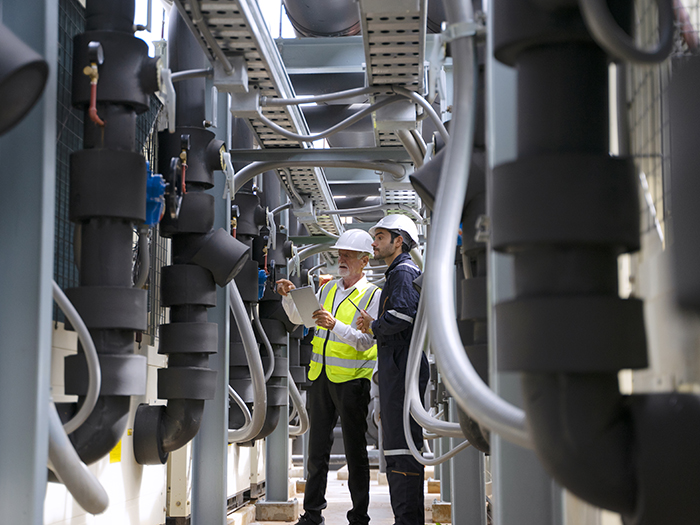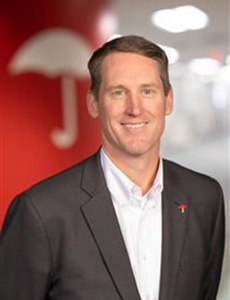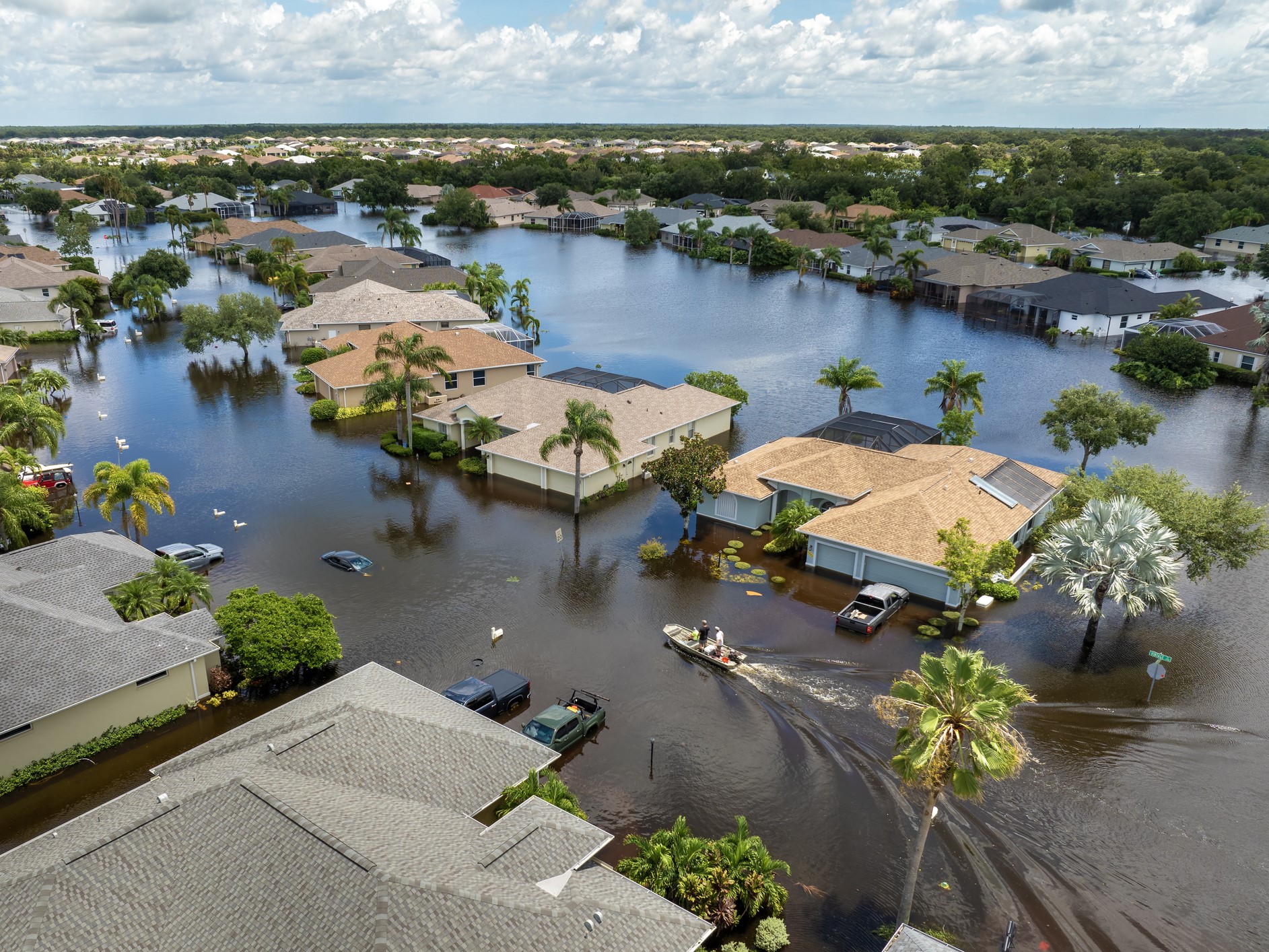Sponsored Content by Travelers
Equipment Breakdown Insurance: Trends, Risks and the Road Ahead

Risk & Insurance®: From your vantage point, what are the most significant trends currently shaping the equipment breakdown (EB) insurance market?
Pete Schulz: Several key trends are converging, raising the risk of breakdowns if not carefully managed:
- There is greater interconnectedness and complexity in equipment often requiring specialized skills to maintain.
- Much of the underlying industrial infrastructure is aging, increasing the risk of breakdowns unless diligently maintained.
- New technologies, like battery energy storage systems (BESS), introduce efficiencies but also new equipment breakdown exposures.
- Persistent supply chain issues continue to exacerbate the business interruption impact when breakdowns occur.
- The overall push toward electrification also makes electrical system failures more concerning than ever.
R&I: With the accelerating shift toward renewable energy sources like solar and wind farms, how is this energy transition specifically impacting the landscape of equipment breakdown risks?
PS: The energy transition is a major driver of change in EB risk. Renewable energy is dependent on equipment, and this is bringing new risks to the line. There is greater exposure to high-severity classes of equipment—such as solar power systems, wind turbines, complex inverters and large-scale battery storage—all of which are susceptible to breakdowns in their own ways. With deep expertise, technical knowledge and proven risk management strategies, Travelers is well-equipped to help customers navigate these evolving challenges.

Pete Schulz, Vice President – Practice Leader, Boiler & Machinery, Travelers
R&I: Focusing on battery energy storage systems (BESS), what specific equipment breakdown risks are emerging, and can failures within a BESS unit affect related connected equipment?
PS: BESS units can face significant breakdown risks such as internal electrical failures, control system malfunctions and essential support system breakdowns. These failures can destabilize the local power environment, sending voltage fluctuations that damage sensitive connected equipment like transformers or production machinery. Abrupt shutdowns may also overload other facility power sources or disrupt broader energy management systems.
R&I: What can organizations do to mitigate the likelihood and impact of equipment breakdown failures?
PS: Organizations can benefit from strictly adhering to regular maintenance and inspections to detect a potential equipment breakdown. Other proactive steps we often recommend, which our customers have experienced success with, include:
- Adopting predictive maintenance when it makes sense because using IoT sensors and machine learning to detect unusual patterns can initiate preventive action.
- Training staff and checking skills regularly to ensure proper equipment handling knowledge and behaviors.
- Investing in high-quality equipment from reputable manufacturers to reduce failure risk.
- Maintaining a spare parts inventory to facilitate swift repairs and having emergency response plans to minimize downtime during breakdowns.
- Fostering strong supplier and vendor relationships to ensure prompt support when needed.
R&I: How critical are robust, regular inspection protocols in managing breakdown risks, especially for newer, complex systems?
PS: Inspections are critical—especially for today’s systems. Their primary value is early detection. Thorough visual, thermal and electrical tests can spot subtle signs of stress or degradation before a major failure occurs. Inspections also validate that maintenance is being performed correctly and help establish a baseline condition for tracking equipment health over time, which informs predictive maintenance and proactive repairs. For interconnected systems, inspections help ensure the integrity of vital support components, not just the main unit.
R&I: Could you explain the role of jurisdictional inspections?
PS: Certainly. Jurisdictional inspections are core to equipment breakdown insurance, helping customers ensure that equipment and installations comply with safety standards and regulations set by local, state or national authorities. These inspections can be critical for maintaining equipment in good working order, preventing accidents and keeping facilities operating efficiently and in compliance with regulatory standards.
R&I: What unique insights does performing thousands of these hands-on inspections provide?
PS: Because Travelers is the largest monoline provider and one of the largest EB writers in the U.S.1, we perform inspections at scale, giving us deep insight into real-world failure patterns—how equipment behaves and fails under different operating conditions and maintenance practices. This experience helps our inspectors recognize subtle early warning signs that might otherwise be missed. It also allows us to identify and share best risk management practices across industries to help our customers reduce their EB risk.
R&I: Looking ahead, what evolving equipment trends will shape the future of equipment breakdown insurance?
PS: Several key trends are shaping the future.
- As technology becomes increasingly complex, the demand for specialization among insurers and inspectors will continue to grow. Expertise will be crucial for navigating the intricate risks associated with evolving technologies.
- We are seeing greater integration of advanced technology into inspection processes, enhancing traditional methods while maintaining the critical role of skilled inspectors. The ability to physically verify conditions, interpret data in context and make expert judgments remains essential for effective equipment breakdown risk management.
- As exposures related to technology expand, the need for efficiency and advanced capabilities becomes even more important.
These trends are why we continuously invest in our people, technology and resources to manage the changing equipment breakdown landscape with confidence and expertise.
To learn more, visit Travelers.com/boiler.
1 S&P Global Market Intelligence 2024 DWP
![]()
This article was produced by the R&I Brand Studio, a unit of the advertising department of Risk & Insurance, in collaboration with Travelers. The editorial staff of Risk & Insurance had no role in its preparation.










